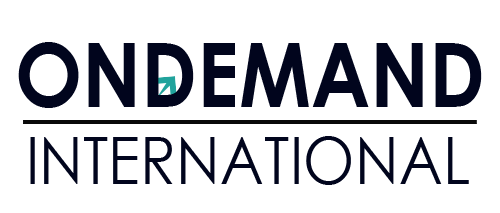
What is a Design Patent?
A patent is a legal license or authorization that gives a right for a limited period, often the selling rights, to prevent others from developing or commercializing an idea or concept. Patents can be of numerous types, including design patents.
A design patent is a legal protection for specific aesthetic features of a produced product. A design patent may be obtained if the design is unique, has a distinctive outside adornment, or both.
In the USA, the United States Patent and Trademark Office (USPTO) acts as the country’s primary patent office and reviews applications for design patents.
This article will provide a brief explanation of the design patent in the USA.
Read More: Types of Patents
What is the criteria to qualify for a design patent?
In order to qualify for a design patent, the design should be beneficial and repeatable.
In order to qualify for a design patent, the following criteria must be met:
- Article of Manufacture-The innovation to be registered for patent should be for an article of manufacture. A tangible item created by man is referred to as an article of manufacture. Putting it in another way, the patented design needs to be incorporated into or utilized in a physical, man-made product.
- Originality- A patented concept has to be “unique” and “original” under 35 US Code 171. Any imitation of well-known things or naturally existing shapes is not patentable due to the uniqueness criterion.
- Novelty– To qualify for a design patent, one criterion is that the design must be fresh and new.
- Ornamental– To qualify for a design patent, the design has to be ornamental following 35 US Code 171.
- Non-obvious- A design that is to be patented following 35 US Code 103 should not be obvious.
Components of a Design Patent Application
The components of a design patent application should contain the following:
- A preamble that describes the form and function of the item where the design is implemented.
- Cross-reference to relevant applications
- Remarks about research and development that the government supports.
- an explanation of the drawing’s figures
- Feature specifications
- A unique claim
- Illustrations or photos
- Signed declaration.
Procedure for filing a Design Patent application
There are two different kinds of patent applications that may be submitted to get a patent under the US Patent and Trademark Office (USPTO):
- Provisional Patent Application– The provisional patent is a faster and more affordable way of submitting a patent application. However, it remains active only if a normal, non-provisional patent application is submitted in a year’s time.
- Non-Provisional Patent Application– This is the ultimate application that a competent patent authority will look at before granting a design patent.
The following procedure must be followed to submit a Design Patent application:
1. Disclosure of the Creation– Clearly describe the innovation, concept, or thought in writing, using words like:
- The innovation field
- The explanation of the design
- The function of the design
- Positive aspects of the idea
2. Describe the functions of the design with illustrations, drawings, or concepts- Illustrations and figures should be made to help clarify how the idea functions through visuals. They are important to patent filing.
3. Conduct patent research- A patent inquiry may be done through the official portal of the USPTO. It is essential to conduct patent research to determine if a related design has already been approved.
It may be required to conduct additional research to ascertain whether specific design elements are inventive, unique, and not already secured by a patent.
4. Filing a design patent application-
- Apply for a provisional patent: The USPTO provides a provisional patent that guarantees the design 12 months of protection as the individual pursues a patent.
- Apply for a non-provisional patent: A non-provisional application must be submitted within the first year following submitting a provisional application.
5. Patent Application Publishing– The patent is usually published after 1.5 years if the application has already been submitted. After publishing, the petitioner is granted provisional privileges.
6. Verification of applications– During the verification of the application, the relevant application is assessed for its patentability, legislative conformity, and if it meets the criteria for granting a patent.
The United States Patent and Trademark Office (USPTO) evaluates the patentability elements of inventions and, if determined to be eligible, notifies the candidate in writing. It might contain conditions that must be satisfied by the applicant so the patent can be granted, but these conditions are much more administrative than practical.
7. Paying the fees- The candidate completes the necessary procedures and pays the appropriate issuance charge in regard to the notification of authorization. Small organizations pay only half of the issuing cost.
8. Approval of patent- After the USPTO gets the issuance amount, it allocates a patent number to the patent filing, which is then posted weekly in the formal document.
Importance of Design Patent
- A design patent is awarded for safeguarding the aesthetic presentation of a utilitarian object’s concept.
- A design patent better protects IP rights.
- It helps to give identity protection and prohibits others from using an individual’s original and novel concepts, and boosts the product’s possible market share.
Advantages of a Design Patent
A design patent is important as it safeguards the aesthetics of a product. This part of the article will focus on the advantages of having a design patented under the USPTO.
The advantages of a design patent are:
1. Keeps the financial investments safe– An object’s profitability and commercial acceptability can be greatly influenced by its design.
A good might have cutting-edge technical elements which are protected by a utility patent. However, the appearance of good aesthetics might be worthy of a design patent security.
In certain circumstances, such as when the technical elements of the good are old, utility protection might not be provided.
However, if an old product is designed into a new one, then a design patent may be obtained in order to safeguard the fresh look of the product. This will help ensure that financial investments made in the design are safe.
2. Discourages imitations– Your product can be exploited by rival or knockoff sellers who might wish to offer a commodity that resembles the commodity that your business provides using similar innovation, technologies, customer support, and branding that sets your commodity apart in the industry.
Customers might find it difficult to distinguish your commodity from the imitator’s.
Hence, from a legal perspective, one of the advantages of a design patent is that design patents can be a very effective instrument that can protect the appearance of your designs from being imitated or copied in any way.
3. A faster means of protection- Under the USPTO, the length of time of submitting a design patent application is far shorter than other forms of patents.
While it’s customary to wait two or more years before the USPTO considers your utility application, the evaluation process for design patent applications often takes significantly less time, with most design patents obtaining their initial evaluation in little over one year.
In certain cases, a patent can even be granted within a year’s time. As a result, applying for a design patent may be advantageous if a fresh product is going to be launched in the market.
4. Marketing advantages– A design patent offers similar marketing benefits as that of utility applications. The item may have the designation “patent pending” if a design application has been submitted.
The designation could be updated to “patented” if granted a design patent.
5. Cost-saving– Design patents are cost-saving as compared to other forms of patents. The design patent application normally costs substantially less to file and enforce at the USPTO.
Only the initial filing fee is required to file a patent application.
Read More: Design Patent Cost
Drawbacks of a Design Patent
- One drawback of a design patent is that it merely offers limited patent security. Only the items depicted in the illustrations are protected. There isn’t any design patent infringement if a rival duplicates the invention but changes the way it looks.
Motives for Patenting a Design
- Patents for designs can be acquired fairly easily and are easy to implement.
- They are affordable and simpler to obtain compared to a utility patent.
- Design patents provide total intellectual property protection.
Circumstances that prevent a design from being patented
- The invention has already been granted a patent.
- The idea has already found use.
- The candidate did not create the design.
- The aesthetics of the design is not original or novel.
Potential Errors When Using Design Patent
Businesses occasionally make a few errors while submitting a design patent application.
Therefore, it’s critical to understand the mistakes and refrain from making them.
- Extensive patent search: It is crucial to conduct an extensive patent search before applying for a patent. By doing this, the possibility of applying for a design patent that has already been granted is reduced.
- Safeguarding the function of the design: A utility patent must be done if a commodity is both distinctive in its aesthetic appearance and functions. Filing for a temporary utility patent permits an individual to refer to the invention as “patent pending” while the individual waits to submit a full utility patent.
- Leaving out specific details: Leaving out specific details: Design patents require illustrations, in contrast to utility patents. The USPTO may reject an application if the illustrations lack sufficient clarity.
- Not consulting an attorney: An attorney can assist in submitting a design patent. Hence, choosing a legal representative with knowledge of IP rights is important.
Validity of a Design Patent
A design patent that was submitted before May 13, 2015, is valid for 14 years. However, if the design patent has been submitted after May 13, 2015, it is valid for a period of 15 years.
Conclusion
Since a design patent is crucial to safeguard a product’s aesthetic elements, it is very important to apply for a design patent. This article briefly describes a design patent and the procedure to apply for a design patent under the USPTO.
For more queries related to design patents, you can consult OnDemand International. We will be happy to solve your queries.
FAQ’s
- A design patent is awarded for safeguarding the aesthetic presentation of a useful object’s concept.
- A design patent better protects IP rights.
- Design protection prohibits others from imitating someone else’s design.
In the USA, the United States Patent and Trademark Office (USPTO) acts as the country’s primary patent office and reviews applications for design patents.
- A “utility patent” safeguards the functionality and utilization of a product, whereas a “design patent” safeguards the appearance of a product.
- Maintenance costs for utility patents must be given, whereas, in the case of design patents, there are no ongoing maintenance costs after the patent has been granted.
- Utility patents are much costlier and more challenging to acquire as compared to design patents.
- A trademark is a symbol that identifies the products or activities that a company, person, or organization offers. It could be a phrase, a symbol, etc., whereas a design patent, which is unrelated to the identification of products, protects the decorative aspects and aesthetic elements of an item as a whole.
- In the United States, marks are granted for a period of ten years and are renewable for additional ten-year durations with no restrictions, while design patents have a 15-year expiration date.
- Novelty
- Originality
- Ornamental
- Non-obvious
- Article of manufacture

